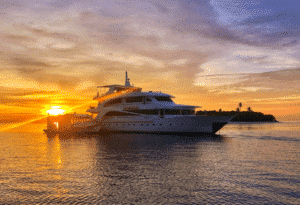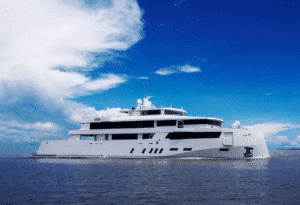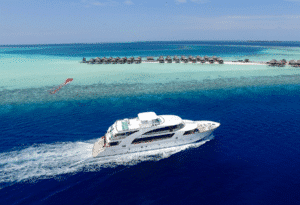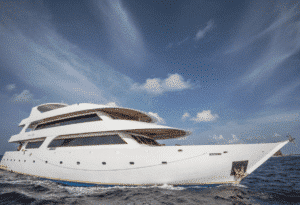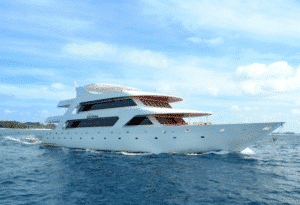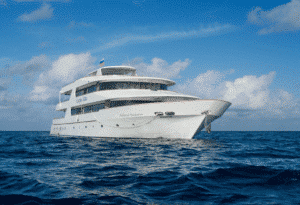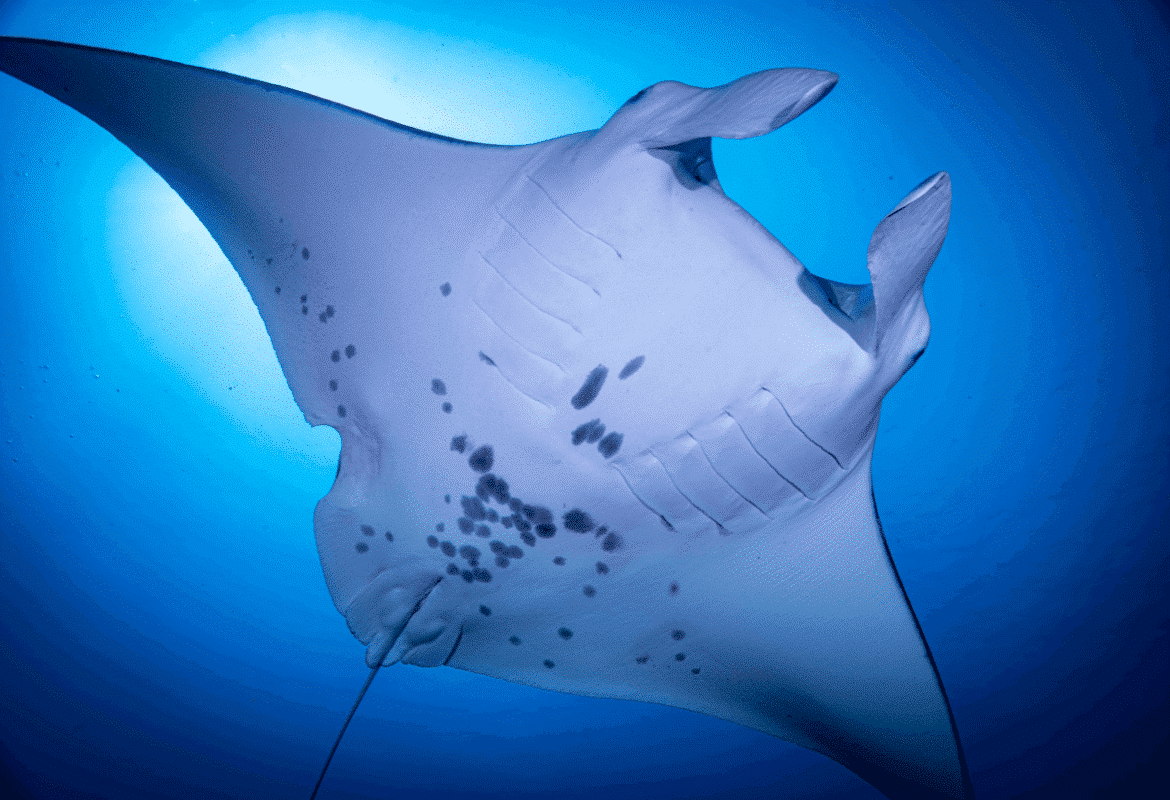Liveaboard Maldives - Complete Travel Guide
Diving in the Maldives is absolutely fantastic, thanks to its rich biodiversity you really do encounter all kinds of things underwater. A liveaboard is ideal for exploring remote dive sites and intensive diving. This article covers what a liveaboard is, a typical daily schedule, popular Maldives cruising routes, advantages and disadvantages, experience required, and frequently asked questions about Maldives liveaboards.
What is a liveaboard in the Maldives?
A liveaboard in the Maldives is a specially designed ship where divers stay on board during their diving vacation. They sleep in a cabin on the ship, eat together on the main deck, all while the boat moves from dive site to dive site. This means more time in the water and less time traveling. Unlike a land-based diving vacation, where you travel to dive sites every day, a liveaboard Maldives offers the convenience of direct access to remote and diverse dive sites. Not surprisingly, many divers choose a liveaboard to the Maldives.
Daily schedule aboard a liveaboard in the Maldives
Eat-Sleep-Dive-Repeat. That is the motto of divers who choose a liveaboard there for their diving vacation. This motto actually describes exactly what you do on a liveaboard.
You will make between 3 & 4 dives daily on a liveaboard. That means getting out early and going to bed on time.

06:30 Dive briefing #1 & Dive 1
08:30 Breakfast
09:30 Dive briefing #2 & Dive 2
12:00 Lunch
13:30 Dive briefing #3 & Dive 3
16:00 Dive briefing #4 & Dive 4
18:30 Supper
It is also possible to take it easy after Dive 3, have dinner around 6 p.m. and then have another night dive around 7:30 p.m. It certainly won’t be every day, but most liveaboards do try to include 1 or 2 night dives in their sailing schedules. It also happens that you just enjoy 3 dives and have a BBQ on a desert island in the evening, also not annoying.
Maldives Liveaboard Routes
A variety of itineraries are sailed by the liveaboard in the Maldives. Having said that, you can actually distinguish them between North, Central and South. The Central route is the most popular route, this is not only because of everything you see – but what also plays into it is that the liveaboard departs from Malé and returns there. This is also where you fly to, making it super easy travel often. The liveaboard is waiting almost at the front door of the airport. Still, we should certainly not forget the North and South of the Maldives either, because there too you can do fantastic diving – again, just with different animals. For example, you can find tiger sharks in the Maldives especially if you grab a liveaboard to the south.
 Central Atolls Route
Central Atolls Route
The central route includes the popular atolls such as Ari, Rasdhoo, Vaavu, and Male. The best travel time is from October to May, when visibility is best and the sea is calm. Highlights include the manta rays and whale sharks of South Ari Atoll, the dynamic drift dives in the channels of Vaavu Atoll, and the vibrant coral reefs of North Male Atoll. This route is perfect for divers who want to see a variety of marine life, from large pelagic fish to colorful macro subjects.
Southern Atolls Route
The southern route explores remote and less visited atolls such as Huvadhoo, Fuvahmulah, and Addu. The best travel time is from January to March, when seas there are calm and visibility is optimal. Highlights include pelagic encounters with tiger and hammerhead sharks at Fuvahmulah, the pristine coral reefs and caves of Huvadhoo, and the historic wreck of the British Loyalty at Addu Atoll. This route offers adventure diving in less frequented waters.
Northern Atolls Route
The northern itinerary of liveaboards Maldives covers the beautiful Baa, Raa, and Lhaviyani Atolls. The best travel time for this route is from May to November, when manta rays and whale sharks flock to Hanifaru Bay, a UNESCO biosphere reserve. Highlights include the colorful coral gardens of Baa Atoll, wreck diving at Felivaru and spectacular drift diving in the channels of Raa Atoll. This route offers a mix of large pelagic encounters and lush reefs, ideal for both macro and wide-angle photography. Its remote location allows for fewer crowds and a more exclusive diving experience.
Our complete range of Maldives liveaboards:
Advantages & disadvantages of a liveaboard in the Maldives
A liveaboard in the Maldives offers access to remote dive sites, allowing you to explore unique and pristine underwater worlds. It provides an intensive diving experience, with multiple dives per day and direct access to the best dive sites. Moreover, it offers a social experience, spending time with other enthusiastic divers. Disadvantages include the limited freedom of movement on board, the risk of seasickness due to constant exposure to the ocean, and the limited choice of meals and facilities compared to land-based resorts. That said, the range of different liveaboards is vast, from luxury ships with large cabins and king-size beds to simpler (but more economical) liveaboards where you sleep in bunk beds.
Diving experience required for a liveaboard Maldives
Experience is crucial for a liveaboard in the Maldives because of the challenging diving conditions such as deeper dives and strong currents. Divers with at least 50 logged dives usually have sufficient skills and confidence to handle these conditions. Requirements for a liveaboard in the Maldives often include an Advanced Open Water certification. Recommended certifications are Nitrox, Deep Diver, and Drift Diver. Do you doubt you have enough experience? Feel free to consult with us, we will be happy to advise you.
Frequently Asked Questions about a Liveaboard Maldives
What does a liveaboard in the Maldives cost? The cost of a liveaboard in the Maldives varies greatly depending on the ship and the length of the trip, but on average prices range from €1500 to €4000 per person for a week.
What should I pack for a liveaboard? Pack light, breathable clothing, swimwear, scuba gear (or rent it locally), a dive computer, sun protection, sea sickness medication, a camera, and personal hygiene items.
How long does a liveaboard in the Maldives last? Most itineraries last 8 days / 7 nights. There are also some boats that offer mostly 10 days / 9 nights or add a few extra days to the schedule on certain itineraries.
How do I book a liveaboard? You can book your liveaboard with us, we can also arrange your flights directly. In addition, we can also extend the trip with a few days at a resort in the Maldives. Ideal if you have vacation days left and want to unwind after a week of fanatical diving.
What about safety and medical assistance on board? Liveaboards are equipped with first aid kits, oxygen, and the crew is trained in emergency response.
Can I avoid seasickness? To prevent seasickness, you can take medications such as antihistamines, use wristbands, and drink plenty of water. It also helps to eat light meals and get fresh air on the deck.
What kind of accommodations and amenities can I expect? Accommodations range from simple cabins to luxury suites. Amenities usually include air conditioning, en-suite bathrooms, common areas such as a dining room, a sun deck, and sometimes a Jacuzzi or spa.
Also experience this diving trip?
Princess Haleema – Classic Maldives
Make the popular ‘Central Maldives’ route in the Maldives and dive with whale sharks, nurse sharks, manta rays and turtles.

